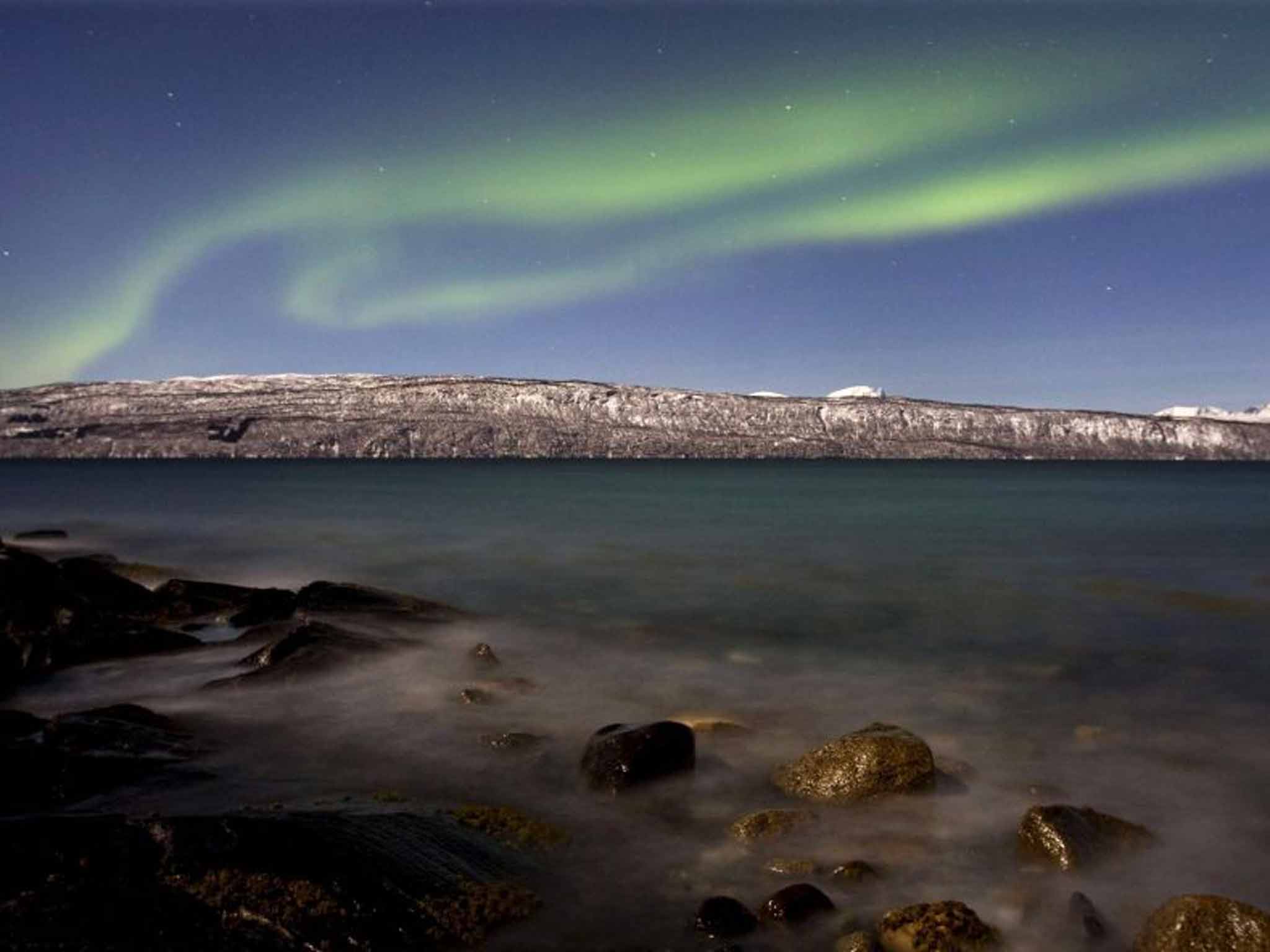'The Northern Lights are a myth': Does the camera lie?
The Northern Lights are elusive, but when you come to see the real thing it can be pretty underwhelming, says Sarah Barrell

Your support helps us to tell the story
From reproductive rights to climate change to Big Tech, The Independent is on the ground when the story is developing. Whether it's investigating the financials of Elon Musk's pro-Trump PAC or producing our latest documentary, 'The A Word', which shines a light on the American women fighting for reproductive rights, we know how important it is to parse out the facts from the messaging.
At such a critical moment in US history, we need reporters on the ground. Your donation allows us to keep sending journalists to speak to both sides of the story.
The Independent is trusted by Americans across the entire political spectrum. And unlike many other quality news outlets, we choose not to lock Americans out of our reporting and analysis with paywalls. We believe quality journalism should be available to everyone, paid for by those who can afford it.
Your support makes all the difference.I feel rather mean spirited about what I'm about to say, but it needs to be said nonetheless: the Northern Lights are a myth. I don't mean they are mythologised by the peoples of the north, which they are, producing colourful creationist stories that have long fuelled campfire sessions; I mean, they don't exist. Or at least they rarely exist in the way travellers imagine and, more pertinently, to the gloriously colourful extent splashed across holiday brochures.
One might argue that most travellers are used to viewing tour operators' postcard-perfect images with a big pinch of propagandist salt. But it's not just the brochures that pile on the pictorial superlatives. It's the photographs themselves. In the case of the Northern Lights, the camera really does lie – no filter, no Photoshop.
I'm just back from Lapland, where I saw what's termed a "faint display" from the aurora. In several trips to the boreal north this has only ever been my experience: a white-green ghostly sky that, while undeniably beautiful, bore no resemblance to the vivid green pyrotechnics captured on my camera's lens. Standing next to me on a frozen Finnish lake, eyeballing the lights through a viewfinder, my eight-year-old daughter didn't believe she was seeing the same thing that wobbled faintly in the heavens above her. But it was. Same sky, different eye.
The colours in aurora photos are real but exaggerated by camera exposures: the shutter opens; light accumulates on the electronic sensor, rendering pale and faint subjects bold and vivid.
All tour operators to the frozen north will tell you that bookings for aurora hunting have boomed in recent years, and I'd wager that increase is directly proportional to the proliferation of digital cameras. More people are taking and sharing photos, and the "myth" perpetuates.
Of course, I was lucky to see anything at all. On most trips the lights remain hidden thanks to cloud cover or a poor performance from the sun, whose electrically charged particles aren't bombarding our magnetic poles with quite the violence needed to excite the colourful gases that create the aurora. The Northern Lights are elusive, which should make them all the more magical. But now, when you come to see the real thing, it can be pretty underwhelming.
One tour operator told me he wanted to invent aurora glasses that do what the camera does, to guarantee a satisfying viewing experience. And yet, if we didn't have this supercharged virtual version to compare to, the real thing would be magical enough. Especially when embroidered by ancient associated folktales. In Sami Finland, these usually involve an Arctic fox with an artistic bent, which touches the mountains with its fur, throwing sparks or snow into the sky. My daughter, at least, was more mesmerised by these myths than the light show on the camera lens.
Join our commenting forum
Join thought-provoking conversations, follow other Independent readers and see their replies
0Comments